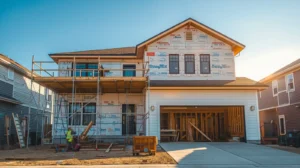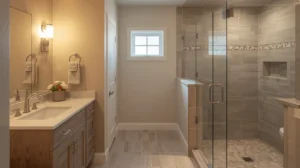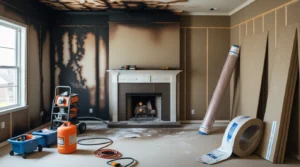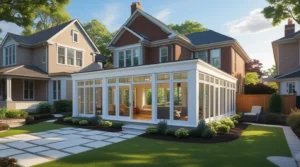Concrete storm shelters are strong, reinforced structures built to protect people during severe storms and tornadoes. They are made from durable concrete, placed either above ground or underground, and provide families with reliable protection and peace of mind.
Understanding the Need for Reliable Storm Protection
Severe weather is not something to take lightly. High winds, heavy rain, hail, and tornadoes can all strike without much warning. In many parts of the country, storm season is a yearly event, and residents know the risks that come with it. Traditional homes, even those built to modern codes, are not always able to stand against the most extreme weather conditions. Roofs can lift off, windows can shatter, and walls can weaken under pressure.
A storm shelter is designed to give people a safe place to go when these events occur. It acts as a stronghold, protecting those inside from flying debris and intense wind forces. The idea is simple: when a storm approaches, families can move into the shelter and wait it out safely. Reliable protection isn’t a luxury it is something that can save lives. For parents, knowing that their children and loved ones are secure brings unmatched peace of mind.
How Storm Shelters Provide Safety and Peace of Mind
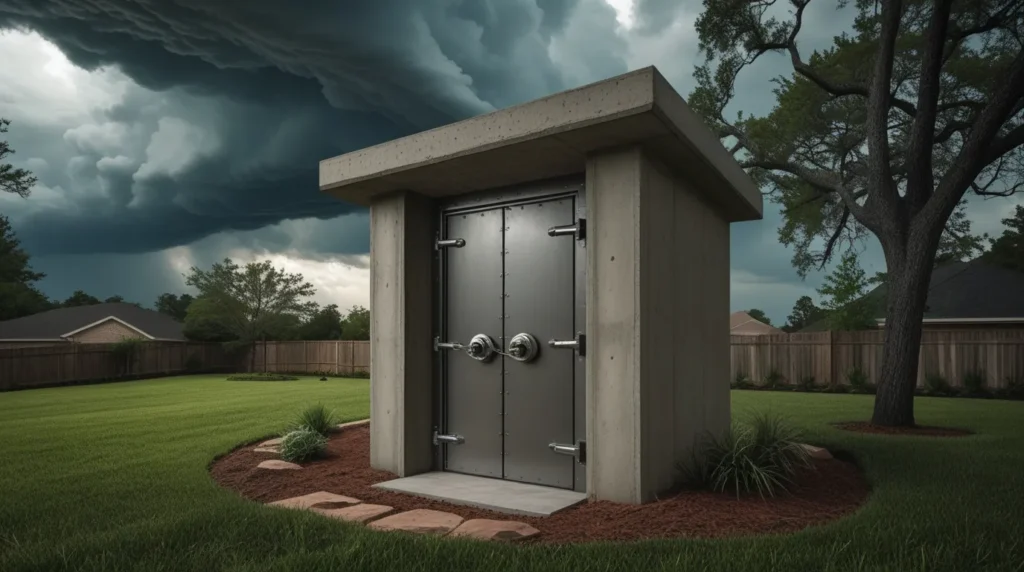
Storm shelters are not ordinary rooms. They are carefully built to meet strict safety standards. The walls are thick and reinforced, the doors are heavy-duty, and the entire structure is anchored to resist wind pressure. These details matter because storms are unpredictable. A tornado can send large objects flying at incredible speeds. Without a strong shelter, those objects could easily break through a regular wall or window.
Having a shelter nearby means families do not have to make last-minute decisions about where to go. Instead of driving through rain or running to a neighbor’s house, they can simply step into their own safe space. This reduces panic and allows them to focus on staying calm. Even children can feel comforted knowing there is a special place designed just to protect them. Peace of mind is just as important as physical safety, and shelters provide both.
Why Concrete Is the Preferred Material for Storm Shelters
When it comes to building a shelter, the material matters. Concrete is the most trusted choice because of its strength and ability to stand the test of time. Unlike wood, which can rot, or thin metal, which can bend, concrete remains strong under pressure. It does not easily crack, burn, or wear down. This durability is why it has been used for centuries in bridges, dams, and tunnels.
Concrete shelters are also versatile. They can be built small for a single-family or large for a group of people. Once built, they require very little maintenance compared to other materials. Families appreciate that a concrete shelter is a one-time investment that lasts for decades. It is not just about safety during storms it is about knowing the structure will be there, reliable and ready, whenever it is needed.
Comparing Above Ground vs. In Ground Concrete Storm Shelters
Not all shelters look the same, and families often choose between two main designs: above ground and in ground.
- Above ground shelters are built on a solid foundation near the home. They are easy to access, even for those with limited mobility, since no stairs are required. Families like them because they can be reached quickly without going outside during heavy rain or hail. These shelters are strong, and when properly reinforced, they are capable of standing against tornado-level winds.
- In ground shelters, on the other hand, are installed below the earth’s surface. Being underground provides an extra layer of protection because the soil itself helps block wind and flying debris. These shelters often feel more secure, especially to those living in areas where tornadoes are common. However, they may require more work during installation and may not be suitable for areas with high water tables.
Both designs have their strengths, and the choice often comes down to convenience, budget, and personal preference.
Exploring Underground Concrete Storm Shelters
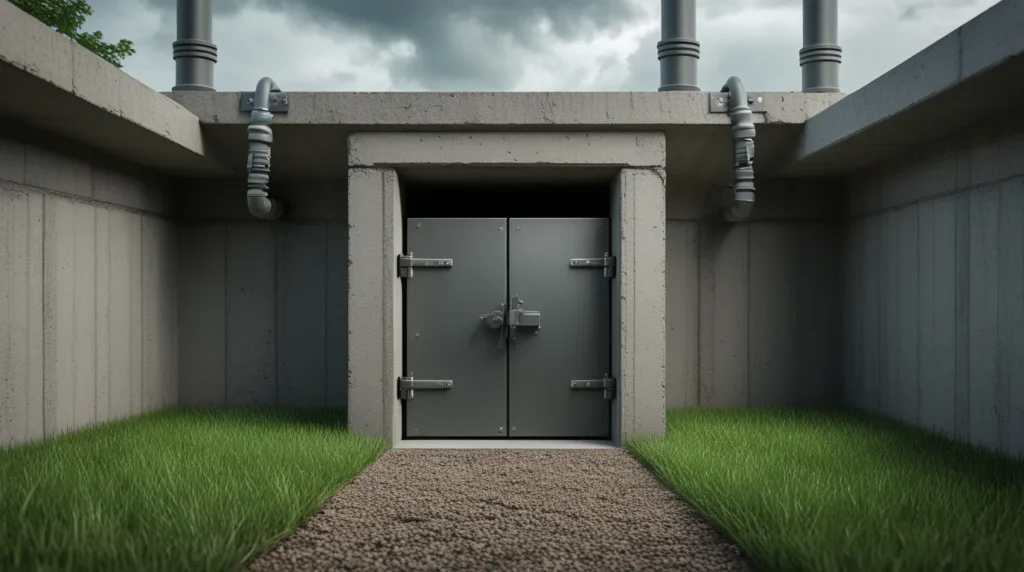
Underground concrete storm shelters have a long history of keeping people safe. Many families feel confident knowing that their shelter is tucked away beneath the ground. These shelters are designed with special doors that are heavy enough to resist pressure yet easy enough to open from the inside. Air vents ensure that fresh air flows even if the shelter is sealed tightly.
Some underground shelters are built as separate structures in the yard, while others can be installed beneath garages or basements. The advantage is that they are naturally shielded by the earth around them. Even when strong winds sweep across the land, underground shelters remain steady. Homeowners often see these shelters as the gold standard of protection, especially in tornado-prone states. The added effort during installation pays off when safety is needed the most.
The Benefits of Reinforced Concrete Storm Shelters
Trusted by Professionals: Many construction experts view reinforced concrete as the gold standard for storm shelters. The combination of steel and concrete creates unmatched reliability that ordinary building methods cannot match.
Added Strength: By placing steel bars or wire mesh inside the concrete, the shelter becomes much stronger. This reinforcement prevents cracking or collapsing when storms hit with full force.
Impact Resistance: Reinforced walls are designed to handle the worst-case scenarios. Even if large debris such as tree limbs, roof shingles, or heavy outdoor items strike the shelter, the walls hold firm without giving way.
Durability Over Time: These shelters are built to last for decades. Because the reinforced concrete does not rot, rust, or weaken easily, families enjoy long-lasting protection with very little maintenance required.
Safety in High-Risk Areas: Builders often recommend reinforced shelters in regions where tornadoes and hurricanes are frequent. The extra protection ensures families remain safe even when storms reach their most dangerous levels.
Peace of Mind for Families: Knowing the shelter can withstand almost anything brings comfort. Parents feel secure knowing their children are protected in a structure built to professional safety standards.
Long-Term Value: While reinforced shelters may cost more upfront, they provide better performance and longer service life. Over time, this makes the investment more affordable compared to replacing or repairing weaker options.
Concrete Tornado Shelters: Built to Withstand the Worst
Tornadoes are some of the most dangerous natural disasters. They can destroy entire neighborhoods in minutes. Concrete tornado shelters are designed specifically for these situations. Their thick walls and heavy doors are tested to withstand the impact of high-speed winds and flying objects.
For families living in tornado-prone regions, having a tornado shelter is not optional it is essential. These shelters provide protection during the worst conditions nature can bring. They also serve as a reminder that preparation is the key to survival. Concrete tornado shelters are not just about physical safety; they are about giving communities the ability to rebuild after a disaster, knowing lives were saved.
Safe Room Concrete Options for Homes and Businesses
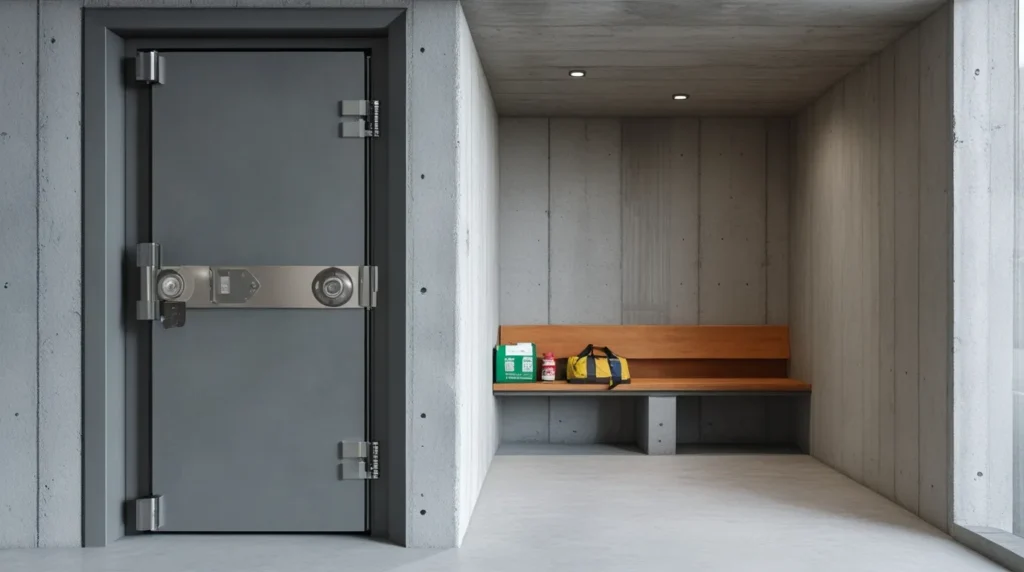
Safe rooms are another form of shelter that can be built directly inside a home or business. They use reinforced concrete walls to create a strong, protective room within an existing structure. The advantage of safe rooms is accessibility. Since they are already inside the building, there is no need to run outside in the rain or wind.
Families often use safe rooms for storage when storms are not present. Businesses install them to keep employees and customers safe. Safe rooms are flexible because they can be designed in different sizes to fit various needs. They represent a practical option for those who want immediate access to safety without leaving the house or office.
Residential Concrete Storm Shelters: Protecting Families at Home
Residential shelters are built with families in mind. These concrete shelters come in many sizes, from small units that hold a few people to larger designs that can protect extended families. They can be installed in garages, basements, or even outside in the yard.
The main advantage of residential shelters is convenience. Families do not need to travel or search for safety when a storm hits. Instead, they can step into their own shelter, knowing it was designed just for them. This ease of access saves valuable time during emergencies. Parents find comfort in knowing they have created a safe environment for their children right at home.
Understanding Concrete Storm Shelter Cost and Installation
Cost is often one of the first questions homeowners ask. Prices depend on several factors: the size of the shelter, whether it is above ground or in ground, and if it includes reinforcement. Above ground shelters are generally less expensive, while in ground options may cost more due to digging and soil preparation.
Installation must always be handled by professionals. Proper site preparation, secure anchoring, and correct sealing are all critical steps. A poorly installed shelter cannot guarantee safety. While the cost may seem high at first, families often view it as an investment in their future. The value of having protection during a life-threatening storm far outweighs the price of installation.
Community Improvement Group: Concrete Storm Shelters in Catonsville, MD
Community Improvement Group has built a strong reputation for creating durable, reliable storm shelters. Families in Catonsville, MD, and nearby areas trust the company because of its attention to detail and commitment to safety. The team offers both residential and reinforced shelter options, helping homeowners choose what works best for their situation.
Community Improvement Group combines expert knowledge with hands-on experience. Customers know they are getting shelters built to the highest standards. From the first consultation to final installation, the company ensures every step is done with care. With years of experience and dedication, Community Improvement Group continues to be a trusted partner for families seeking reliable protection.
Conclusion
Concrete storm shelters are one of the most dependable ways to stay safe during severe weather. Whether above ground, in ground, or built as reinforced safe rooms, they give families the strength and protection needed to face storms with confidence. By choosing skilled builders and strong materials, homeowners can make sure their loved ones are safe when nature shows its power.
If you are ready to take the next step in protecting your family, reach out to Community Improvement Group today. Our team is here to guide you through every detail and build the right shelter for your home.

